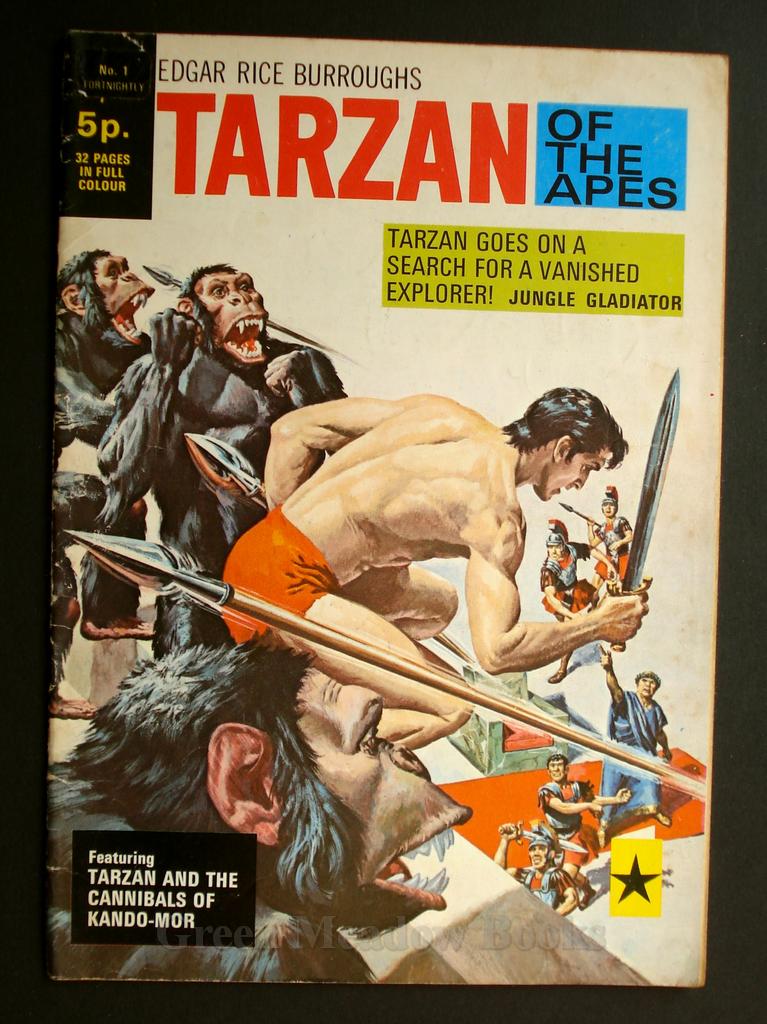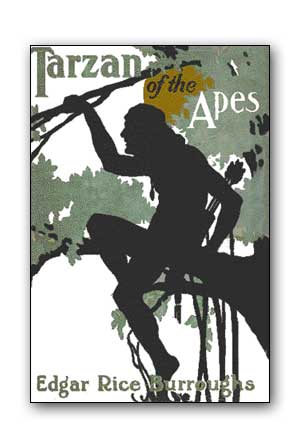
Burroughs was a product of and reflects his time. Not nearly far enough, but some distance nonetheless. It was published in 1912, not all that long after the Bronx Zoo displayed a pygmy in the monkey house. At first blush it appears incredibly dated, awash in the racism of its era. In looking at it anew with a bit more lifetime and some extra inches under my belt, a few things stand out. Tarzan is introduced to the world in October 1912 - from Maybe it was not sci-fi enough for my pre-adolescent self.

While I am a fan of ERB's Barsoom series, I was never all that taken with jungle boy. I had first read this, of course, back in my wastrel youth, in the early 60s most likely. Tarzan of the Apes was a free download from somewhere I cannot recall. iTouch reading is of a different sort, at least it has been to date.

I save my hardcore reading for when I am sitting and can take notes. As it is not comfortable wrangling the actual book I am reading at a given time while standing, I lift my trusty iTouch and am able to read a bit until the crowd thins. Coming home, though, I often have to stand for a good while before I can get a seat. One of the advantages of riding the subway to work is getting extra reading time. This edition includes a biographical afterword. This classic tale of adventure by Edgar Rice Burroughs has captivated readers both young and old ever since its original publication in 1912.

Tarzan becomes a skilled hunter gaining him respect amongst the apes and drawing the ire of Kerchak, setting up a final and fatal conflict between the two. Tarzan discovers his true parents’ cabin and there, in books, he learns of others like himself.

As Tarzan grows up he begins to recognize that he is different from his ape peers, a realization that stirs within him feelings of alienation and drives him to discover his true heritage. When his father is killed by the savage king ape Kerchak and his mother dies of natural causes when he is just one year old, Clayton is adopted by the she-ape Kala and renamed Tarzan, or “white skin” in the ape language. It is the coming of age story of John Clayton, the son of an English couple, Lord and Lady Greystoke, who are marooned in the western coastal jungles of equatorial Africa. First published in the pulp magazine “All-Story Magazine” in October, 1912, “Tarzan of the Apes” is the first novel in a series of adventure novels that was so popular that it would spawn some two dozen sequels.


 0 kommentar(er)
0 kommentar(er)
